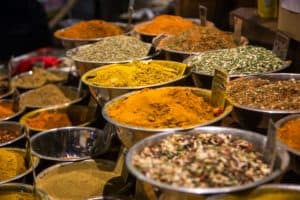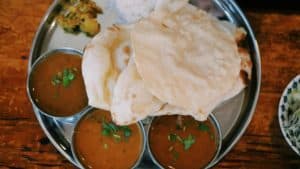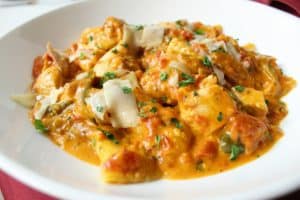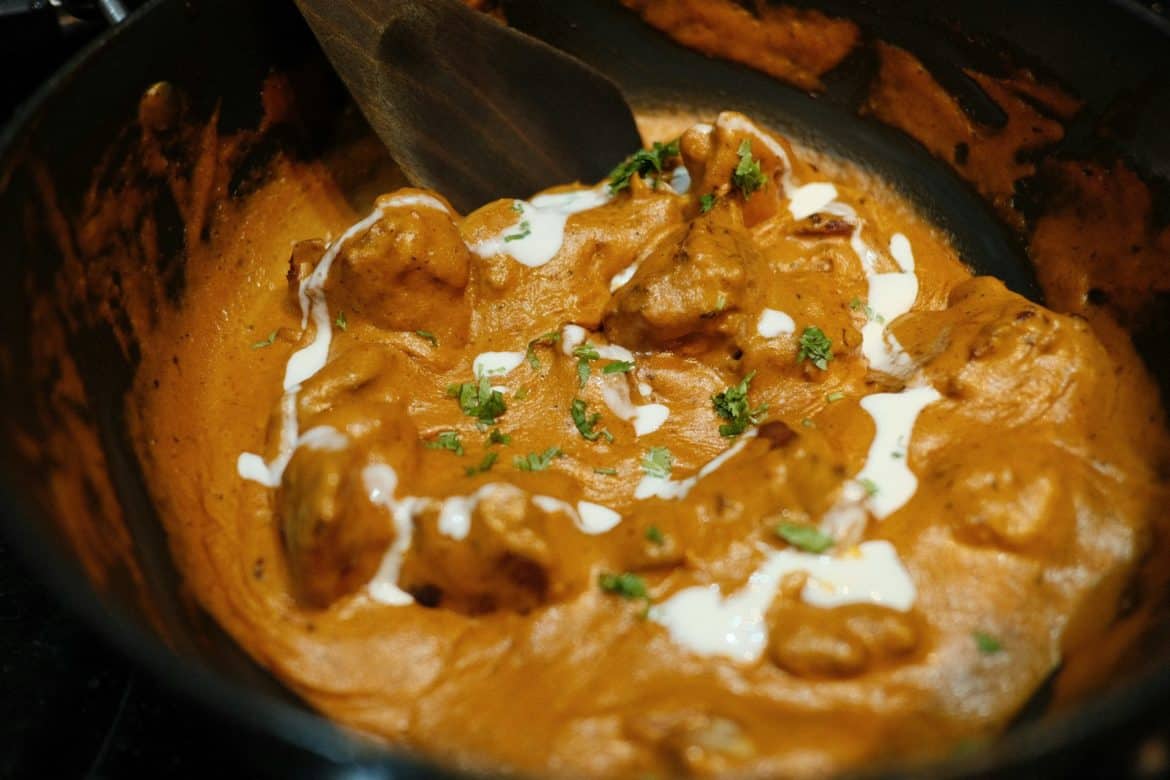Embarking on the quest for the “best Indian curries” reveals a diverse array of tastes that define the essence of Indian cuisine. This journey is an exploration into a culinary heritage that spans centuries, regions, and cultures. Indian curries, with their myriad of tastes and aromas, offer a look into the soul of India—a land where food is an art form, deeply intertwined with its history and traditions. From the creamy, buttery delights of the North to the tangy and spicy concoctions of the South, each curry tells a story of its own, rooted in the local landscapes and traditions from which it originates.
As we look deeper into the world of best Indian curries, we discover that the diversity of these dishes is matched only by the complexity of their flavors. Each region of India brings its own signature to the curry pot, using a unique blend of spices and ingredients that reflect its cultural identity. Whether it’s the robust and hearty curries of Punjab, the coconut-infused gravies of Kerala, or the subtly spiced fish curries of Bengal, the variety is endless. Through this exploration, we come to appreciate the skill, patience, and passion that go into creating the best Indian curries, making each dish a celebration of India’s culinary legacy.
What Makes Indian Curries Unique?

Central to the best Indian curries is the use of a wide variety of spices, from the well-known turmeric, cumin, and coriander to the more exotic asafoetida, fenugreek, and cardamom. These spices are not used haphazardly but are carefully selected and balanced to create layers of flavor that are complex yet harmonious. The process often begins with the preparation of a masala, a blend of spices that forms the heart of many curries. Whether dry-roasted to release their aromatic oils or ground into a paste with water, oil, or vinegar, the spices in a masala impart depth and character to the dish.
Another hallmark of the best Indian curries is the technique of tempering, known as tadka. This involves heating spices in hot oil or ghee until they pop and release their essence, a method that enhances the flavor profile of the curry. The tempered spices are then added to the dish, either at the beginning to flavor the oil or at the end as a fragrant garnish.
The diversity of Indian curries is also evident in their base ingredients. In the north, curries often feature dairy products like yogurt, cream, or paneer, giving them a rich, smooth texture. In contrast, southern curries might include tamarind, coconut milk, or curry leaves, offering a tangy, spicy, and aromatic profile. Eastern India, with its abundance of rivers and lakes, is renowned for its fish curries, while western India offers a variety of vegetarian curries that are both hearty and flavorful.
Regional Variations in Indian Curries
India’s vast geographical diversity has a direct impact in its culinary, particularly in the realm of curries. Each region of India brings its own unique flavors and ingredients to the table, creating a wide diversity of dishes that highlight the country’s cultural wealth.
North India is famous for its creamy curries, heavily featuring dairy products like ghee, cream, and yogurt. These dishes, including Butter Chicken and Paneer Makhani, are aromatic and rich, often enhanced with spices for warmth. Dried fruits and nuts sometimes add a subtle depth, making these curries distinctively luxurious.
Eastern India, with its plentiful rivers and lakes, specializes in fish and seafood curries. Mustard oil and seeds are key, lending a sharp, distinctive taste. Bengali fish curry, a mix of spicy and savory with local fish in mustard-based gravy, is a regional highlight, showcasing the area’s knack for balancing flavors.
Western India presents a contrast with its lighter, less spicy curries. Goa’s coastal cuisine features tangy, coconut-based seafood dishes, reflecting Portuguese influences. In contrast, Gujarat’s vegetarian options utilize vegetables and legumes, flavored with jaggery and kokum for a unique sweet and sour taste.
Southern India is known for its use of tamarind, coconut, and curry leaves, giving its curries a tangy and aromatic profile. From Tamil Nadu’s fiery Chettinad chicken to Kerala’s mild, coconut milk-based stews, the South offers a wide range of flavors. The emphasis on lentils and local vegetables in dishes like Sambar and Rasam highlights the region’s focus on health and nutrition.
This panoramic view of Indian curries illustrates the country’s culinary diversity, with each region’s unique ingredients and cooking methods contributing to the rich palette of flavors that define Indian cuisine.
The Best Indian Curries

Exploring Indian curries offers a journey through a kaleidoscope of flavors. Here are some must-try curries that capture the essence of India’s diverse culinary landscape:
Butter Chicken: Originating from North India, this curry is a global favorite. It combines grilled chicken chunks in a creamy tomato-based sauce, enriched with butter and cream, offering a smooth and rich flavor that’s hard to resist.
Rogan Josh: A staple from Kashmir, this curry features tender pieces of lamb cooked in a gravy seasoned with a variety of spices including cardamom and cloves, giving it a robust flavor and a vibrant red color.
Chettinad Chicken: Hailing from Tamil Nadu in the South, Chettinad chicken is known for its fiery spice blend, including black pepper, dry red chillies, and fennel seeds, making it a treat for those who love their curries hot and flavorful.
Goan Fish Curry: Reflecting Goa’s coastal influence, this curry uses fish steamed in a tangy mixture of coconut milk and Goan spices. It’s a perfect blend of spicy, sour, and sweet flavors.
Palak Paneer: A beloved vegetarian option, this North Indian curry consists of paneer (cottage cheese) cubes in a smooth spinach sauce. It’s mildly spiced, nutritious, and pairs wonderfully with naan or rice.
Dal Makhani: A heartwarming dish from Punjab, made with lentils and beans slow-cooked in a buttery tomato sauce, seasoned with garam masala and cream. It’s a rich, velvety curry that’s comforting and satisfying.
Each of these curries offers a glimpse into the rich culinary traditions of India, showcasing the versatility and depth of Indian cuisine. Whether you’re a spice enthusiast or prefer milder flavors, there’s an Indian curry that’s sure to delight your palate.
How Chefs Achieve Rich Flavors in Indian Curries

The complex, deep flavors of Indian curries are a result of generations-old cooking techniques and meticulous preparation. At the core of these flavorful dishes is the use of freshly ground spices. Chefs and home cooks grind spices for each dish, unlocking potent aromas and oils far superior to pre-ground versions. Another essential technique is tempering (tadka), where spices are heated in oil or ghee to release their essential oils, infusing the curry with distinctive flavors. This method often employs mustard seeds, cumin, and curry leaves for added depth.
Layering flavors is crucial to developing the complex taste profiles characteristic of the best Indian curries. The process begins with sautéing onions, garlic, and ginger, followed by the addition of spice blends and main ingredients such as vegetables, meats, or legumes. This step-by-step approach ensures that each element contributes its fullest flavor. Slow cooking further melds these flavors, tenderizing meats and thickening sauces to perfection. Many curries, like lamb rogan josh or beef curry, benefit immensely from being simmered for hours.
Acidic components like tamarind, lemon juice, or yogurt are often introduced to curries to cut through the richness and add a layer of brightness. These not only contribute a tangy dimension but also elevate the overall taste profile of the curry. The final flourish comes from herbs and garnishes such as fresh cilantro or a dollop of cream, which add freshness and creaminess, respectively, balancing out the dish’s complex flavors.
The Enduring Appeal of the Best Indian Curries
The best Indian curries stand as a vibrant celebration of India’s diverse culinary heritage, enticing food lovers worldwide with their complex flavors and aromatic spices. These dishes represent more than just food; they are a mosaic of cultural histories, traditions, and stories from various regions of India. The global appeal of Indian curries highlights the universal love for flavors that are bold, nuanced, and capable of bridging cultures and communities. Their adaptability to different tastes—from the creamy, mild varieties to the zestful, spicy ones—showcases the versatility and innovation at the heart of Indian cuisine.
Exploring Indian curries is not just about savoring exotic flavors; it’s an invitation to a culinary adventure that fosters cultural appreciation and culinary exploration. Whether through cooking at home, dining out, or participating in food tours, diving into the world of Indian curries offers endless opportunities for discovery and joy. Our Indian food tour in London, for instance, provides a unique way to experience these delectable dishes firsthand. Join us on this flavorful journey to uncover the enduring charm of Indian curries and their ability to connect us with the wide variety of India’s culinary legacy.
